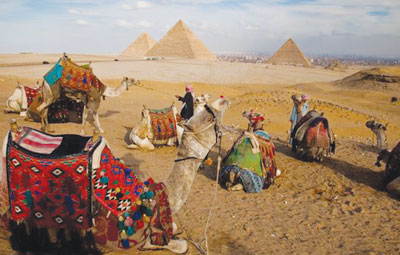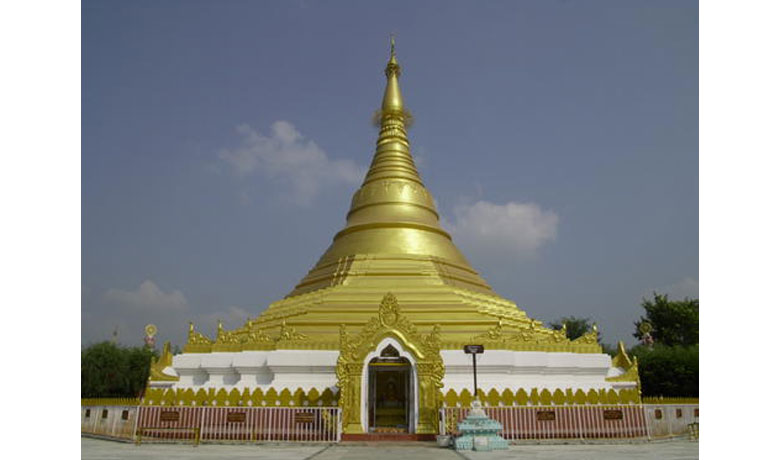World’s Most-Visited Ancient Ruins
RISINGBD DESK || risingbd.com

World’s Most-Visited Ancient Ruins
1) Great Wall, Badaling, China
Annual Visitors: 9–10 million
The Great Wall: a name so simple, yet so powerful. It stretches for 5,500 miles across China, and its most beautiful section happens to be easily accessible—within 70 miles of Beijing. While much of what is visible today was built during the Ming Dynasty (1368–1644), construction began on various sections as far back as 770 B.C. Credit goes to the million slaves and prisoners of war who carried blocks of granite, bricks, stones, and dirt on their backs up to the top of the ridgelines.
Source: China Odyssey Tours
2) Colosseum, Rome
Annual Visitors: 6.9 million
When completed in A.D. 80, the arena held 50,000 spectators who watched mythology-based dramas and reenactments of land and sea battles as well as executions, fights-to-the-death among gladiators, and the ghastly slaughter of wild animals. The underground pits where those gladiators awaited their demise were opened to visitors in 2010 along with the 110-foot-high upper ring of seats, which offer panoramic views of the Eternal City.
Source: Italian wire service ANSA
3) Roman Forum, Rome
Annual Visitors: 5.1 million
The social center of Rome for 1,200 years beginning in the fifth century B.C., this 700-yard-long piazza has been both marketplace and government center. The ruins of sacred temples’ columns and friezes (whether dedicated to Saturn, the god of agriculture, or to the emperors Vespasian and Titus) hint at the level of grandeur on display here two millennia ago.
Source: Roman newspaper Il Messaggero
4) Terracotta Army, Xi’an, China
Annual Visitors: 3.6–4.5 million
Discovered in 1974, these 700 life-size terracotta generals, infantrymen, archers, chariot drivers, and other warriors—as well as 400 horses and 100 chariots—are each unique, with distinct facial features, hairstyles, and clothing. Perhaps it’s the individuality of these clay statues that makes them so compelling. They were arranged in rows in covered pits as part of a necropolis for Emperor Qin Shi Huang. More are believed to still be buried, but work on removing and restoring the soldiers has been halted until a way can to found to keep their bright paint from fading in the air.
Source: China Odyssey Tours
5) Pyramids of Giza, Egypt
Annual Visitors: 4 million
As one of the original Seven Wonders of the World and certainly the symbol of Egypt, the Pyramids have venerability cred going back 4,500 years. Yet we still don’t know for sure how the ancient Egyptians built them, which only adds to their intriguing appeal to travelers. The three major tombs for pharaohs at this UNESCO World Heritage Site are now surrounded on three sides by the pressures of Cairo, a city teeming with nearly 11 million people.
Source: Egypt Tourism
6) Pompeii, Italy
Annual Visitors: 2.5 million
Pompeii gives visitors who walk its excavated stone streets a firsthand experience of first-century Roman life. The coastal town famously disappeared completely under ash and pumice during the sudden eruption of Mount Vesuvius in A.D. 79. Plaster casts made from “molds” created when ash-covered bodies disintegrated under the consolidated ash are moving reminders of the real people and animals that lived there.
Source: Current Archaeology
7) Acropolis, Athens
Annual Visitors: 2 million
The Acropolis refers to the cliff-like hill used as a citadel above Athens, and its most powerful monument is the hilltop Parthenon, a seemingly intact temple to the goddess Athena that’s the symbol of both Classical Greece and the origins of democracy. Built in the fifth century B.C., the Parthenon has lost many of its friezes and marble sculptures to plundering for European museums—with sporadic negotiations to try to get them back.
Source: Greek National Tourist Board
8) Efes (Ephesus), Turkey
Annual Visitors: 2 million
Thirty years ago Ephesus was a nearly forgotten Roman ruin in an area of sparsely populated Turkish villages. Now much of the local economy is driven by it. The library and other buildings have been restored to give a sense of this large city 2,000 years ago, and concerts are still held in the 25,000-seat theater. Carved into a block in the marble road is what is believed to be an advertisement for a brothel.
Source: Turkish Ministry of Tourism & Culture
9) Teotihuacán, Mexico
Annual Visitors: 1.9 million
The terraced Pyramids of the Sun and Moon dominate the ancient plaza of this sacred city built between the first and seventh centuries. At 250 yards on a side and 200 feet tall, the Pyramid of the Sun is the third largest pyramid in the world. But the Temple of Quetzalcoatl is more decorated—dedicated to the plumed serpent god that figures prominently in its sculptures and reliefs.
Source: SIIMT Inteligencia de Mercados
10) Hierapolis, Turkey
Annual Visitors: 1.6 million
The brilliant-white, terraced pools of the Pamukkale “cotton palace” hot springs have lured people to this area for well over two millennia and are the reason the Greco-Roman town of Hierapolis exists. Built just above the half-mile-wide, 65-foot-tall travertine wonder in 190 B.C., this ancient “spa town” has ruins of temples, a well-preserved theater,and a Sacred Pool where visitors float above broken Roman columns.
Source: Turkish Ministry of Tourism & Culture
risingbd.com






































